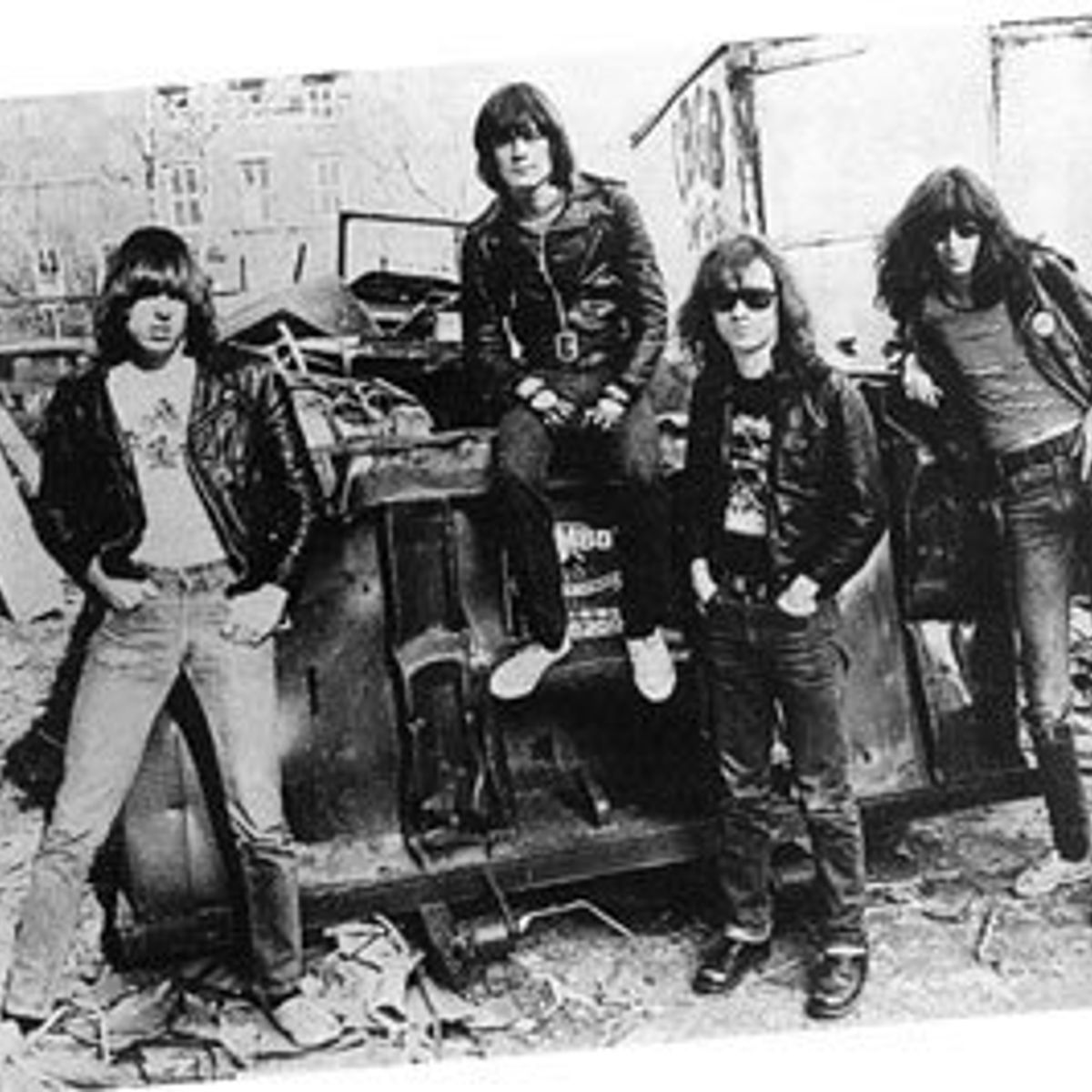By Chlotrudis Independent Film Society
Rating: 3.25
Director: Jim Fields | Michael Gramaglia

Country: united_states
Year: 2004
Running time: 120
IMDB: http://www.imdb.com/title/tt0368711/combined
Chris says: “Well, now that this is being held over at the Kendall for another week, I can encourage all you Boston folk to check it out. Music films should be seen in a theater with an appreciative audience, dagnabit!
A must-see for Ramones fans and recommended to anyone who loves punk or even popular music (the band essentially made classic pop dressed up in loud, fast, punk clothing), this is a definitive, well-made documentary about four guys who really did change the world without ever cracking the Top 40. From their humble Queens roots to wowing/confusing audiences at CBGB’s in the Bowery to their infamous recording sessions with Phil Spector, this touches on every significant chapter in the band’s history (although I would’ve liked more than fifteen seconds on ROCK AND ROLL HIGH SCHOOL–did any Ramone ever hit on P.J. Soles?) .
“Even better, it amusingly, honestly documents what a dysfunctional family they were: lead singer Joey was a hopeless romantic and an obsessive compulsive, guitarist Johnny a shrewd businessman and a thorny Republican, bassist Dee Dee a drug-addled screw-up but also a lovable underdog.
“Like the best music documentaries, this one celebrates the band without sugar-coating them, and the performance footage suggests that for all their influence on other acts like The Sex Pistols, The Clash and endless copycats indulging in the punk lifestyle, they still sounded (and acted) like no one else. 4 cats”
Bruce says: “**SPOILERS**
“As in DiG!, the lingering question in END OF THE CENTURY is: ‘Why do some bands make it and others never get the acclaim they deserve.’ I’ve heard of a writer’s writer and a painter’s painter; if there were such a distinction for musicians, the Ramones would head the list. Many famous bands were inspired by the Ramones and give them credit. Spanning a twenty-one year career, they never really had a hit or a top selling album; they never had a mass following in their own country in spite of being stars in England and Brazil. Why? What happened?
“First, none of the Ramones were very accessible. Johnny was the founder of the band and he is more or less a misanthrope. He also is an oddity in his music circles with his ‘God bless President Bush’ as he was inducted into the Rock and Roll Hall of Fame. Joey, the lead singer, was pathologically shy and insecure. Dee Dee the songwriter was a heroin addict, incoherent much of the time. Tommy, the original drummer and spokesman, left the band for saner territory. Other such as Markey, CJ and Richie came and went over the years.
“When the Ramones first hit the New York music scene at CBGB, they quickly developed a following. Donnie and Marie were the big stars in popular music in those days; the U.S. culture was nice, neutral and muted. In Joey’s words, they bridged the gap from pop rock to punk rock. Certainly they owe some sort of bridge building debt to the New York Dolls who were club darlings a few years earlier. When they performed they were rough, angry and frequently argued onstage. Their songs were short and fast with driving beats. Their lyrics were drawn from experiences such as hustling men for drug money. They refused to tone down lyrics such as ‘I’m a Nazi baby.’ In short, they weren’t very likable or amenable.
“The Ramones toured constantly. Every city was a struggle and they received little or no radio play. When they returned to cities around the country, new groups such as The Replacements, the Dead Kennedys, Black Flag and the Cramps were local stars. Back in New York, bands such as Blondie came out of CBGB and achieved superstardom. The Talking Heads and Patti Smith had the critics raving. Punk rock as a genre never became a huge scene here as it had in England. The Ramones did pave the way for new music, and no matter what you called it – punk, new wave, or alternative – the music industry was changing. But the music industry wants hit makers not talented musicians who inspire others but have no great commercial value.
“What goes on behind the scenes is sometimes beyond what we ever could imagine. The Ramones who performed and recorded together for 21 years had several different band members although two of the Ramones, Johnny and Bobby, maintained a consistent presence. Bobby died of cancer in 1999. Johnny mentions that he never went to see Bobby when he was dying because they never liked each other. How could this be? How could two performers go through the motions for so many years and not even like the person with whom they spent most of their time?
“END OF THE CENTURY is a very entertaining film which is not very well made. I liked the film for the insight it gives the viewer into the reasons for the band never achieving greater heights. As individuals, I did not like any of them. Moreover, the filmmakers did nothing to make the film more enjoyable. Opportunities were squandered. Interviews with Chris Stein and Debbie Harry used a still camera – no changes in camera angles, no close-ups no pan shots. And the questions asked weren’t interesting or challenging enough. Still, I have fond memories of hopping around the dance floor to ‘I Want to Be Sedated.’ Chlotrudis member Thom Bowser has reminded me we did see the Ramones as an opening act for Joan Armatrading in Central Park in the early 1980’s. 2.5 cats”
